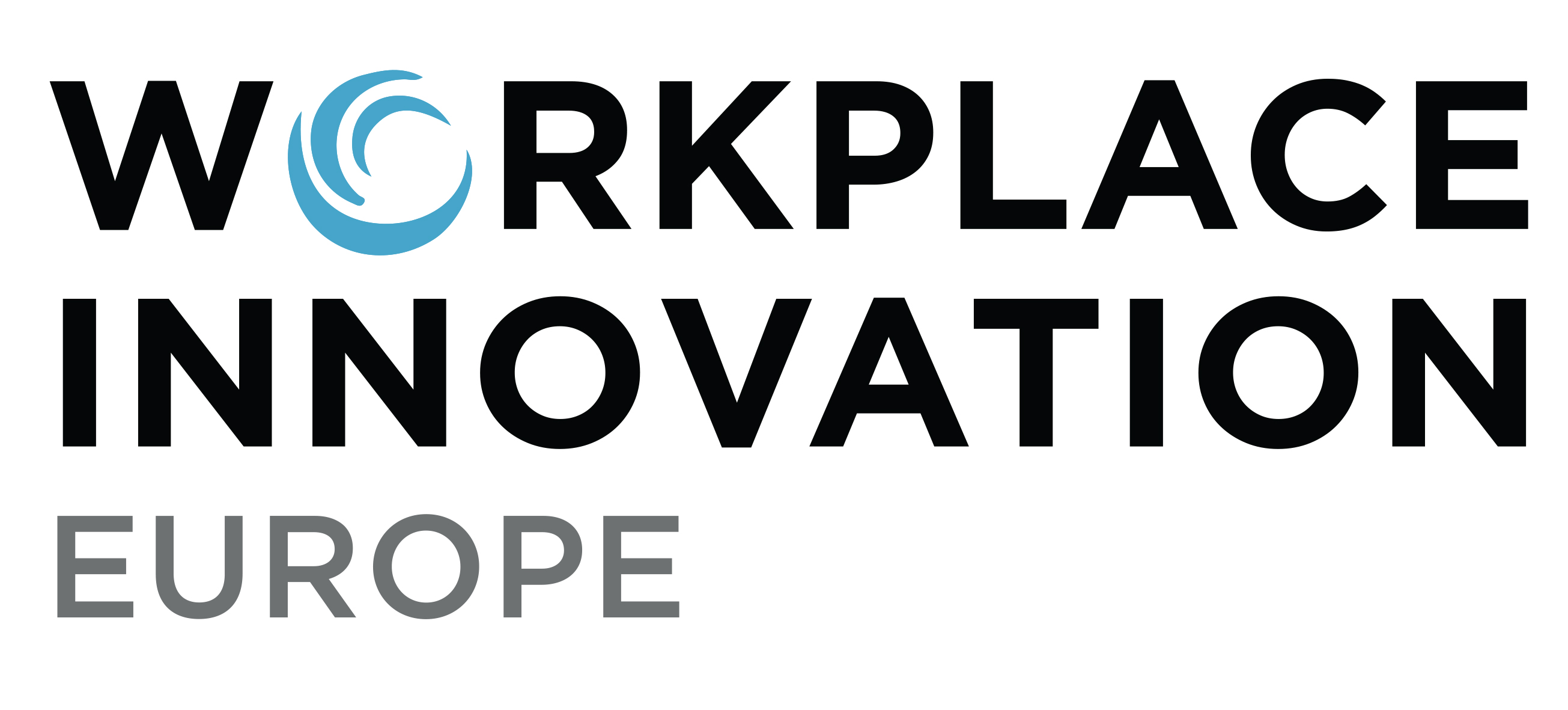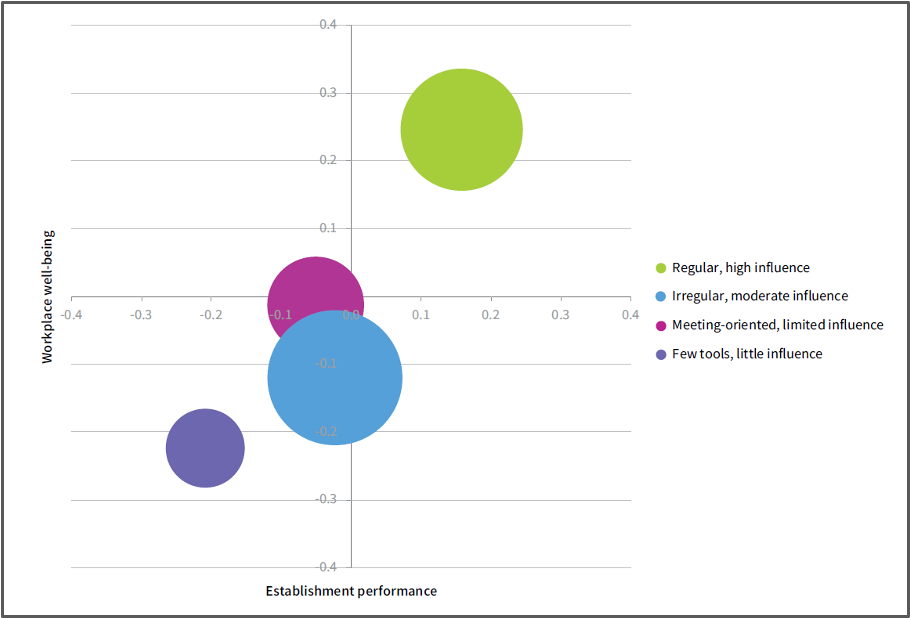Why does employee influence matter?
Participative approaches to decision-making improve performance & wellbeing
Last week we showed that companies seeking to become Employers of Choice need to trust workers and their teams to exercise choice in how they undertake their tasks, and to learn and develop by solving unfamiliar problems together rather than delegating them upwards.
Empowerment and trust in the workplace are important, leading to tangible gains in business performance alongside enhanced workforce engagement and wellbeing. But such trust-based cultures start with management – how managers behave and how their roles are defined.
We’ve shared the following data on management with a few companies recently, and it led some to ask “what exactly are managers for?” It comes from the 2019 European Company Survey of 20,000 workplaces representing a diverse range of organisations.
The chart is measuring the impact of employee involvement in decision-making on both business performance (profitability, output and employment) and workplace wellbeing (management behaviour, motivation, sickness absence and retention).
Organisations in which employees exercise “Regular, high influence” are those in which workers and their teams regularly share decision-making with their managers in one-to-one meetings or forums, supported by effective communication tools. As you can see from the chart, such workplaces are associated with positive outcomes for both business performance and wellbeing – in sharp contrast to those where there are “Few tools [for employee participation] and little influence”.
In many ways this is unsurprising
Shared decision-making brings the widest possible range of knowledge and experience to solving problems and realising new opportunities. Co-participation in the design of work organisation brings particular benefits in terms of productivity improvements and the removal of frustrations that undermine job satisfaction.
And when decisions are jointly owned by managers and their teams, both sides share a common understanding of the tasks in hand.
For employees, respect for the contribution they can make to decision-making is strongly associated with health and wellbeing. On the other hand, there is plenty of evidence to show that disempowerment and top-down decision-making are strongly associated with stress and ill-health, not to mention employee turnover.
Size matters
Now look at the size of the respective dots. In the UK, for example, jobs with high levels of employee influence are widely present in only 40% of workplaces, pointing to enormous untapped potential for gains in both performance and wellbeing if employers fully understood the benefits of collaborative decision-making.
Of course, as the blue and purple dots suggest, many more workplaces are somewhere on the journey from top-down to collaborative decision-making. But such organisations are only mitigating some of the worst effects of autocratic management on performance and wellbeing rather than achieving the win-win outcomes represented by the green dot.
But managers have to change . . .
There are many reasons why people are appointed to management positions, but in many organisations this has more to do with technical performance or professional competence than people skills.
Participative decision-making entails an acceptance by managers that they don’t necessarily have the best answers, and that requires a degree of self-awareness and humility. It also challenges certain cultural norms about what it means to manage. That’s why we offer leaders and managers the opportunity to develop and strengthen emotionally intelligent behaviours through profiling and coaching, helping them to reflect on their own practices and to help build high trust, high engagement workplaces that lead to wins both for their organisations and their people.
It really makes a difference, not least as part of a transition towards shared and participative decision-making in the workplace.
Time to act
Becoming an employer of choice means going beyond the gloss and taking a hard look at what really matters. Our free Guide to Workplace Innovation and Short Diagnostic are a good place to start. You can find them here, or contact us today for a free, no obligation one-hour consultation.




